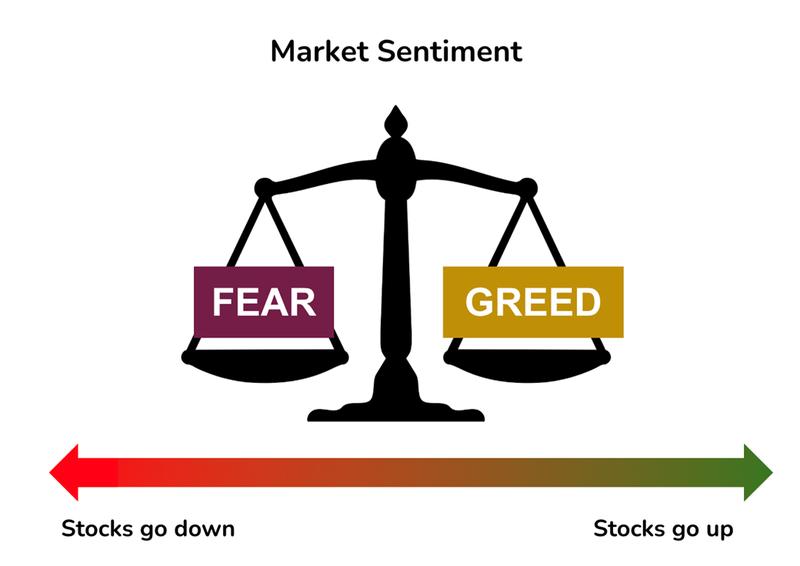Why do shares prices go up?
Published 02-MAY-2023 10:00 A.M.
|
6 minute read
We invest in small caps in the hope that the share price will go up.
Share price moves mostly come down to luck, good timing, and a fair bit of patience.
The tricky part is understanding what events move share prices and then buying ahead of one of those factors coming into play.
Why small cap share prices go up
At the highest level, share prices are subject to simple supply and demand dynamics.
Fundamentally, share prices go UP when there are more buyers than sellers.
AND
Share prices go DOWN when there are more sellers than buyers.
There are generally four things that bring more buyers than sellers to a company’s shares. We call these “price demand drivers”.
- A return of positive market sentiment. Investors are optimistic and looking to buy, viewing the outlook for stocks/markets as positive.
- A potentially company-making announcement is imminent. Investors start to speculate on the outcome of a potentially company-making announcement like a drill result or result of a clinical trial.
- An announcement that exceeds market expectations. A company delivers a material announcement that is better than the market expected or it came as unexpected good news.
- Large capital inflows. Macro fundamentals for a sector/investment theme improve significantly and investors start to look for opportunities to capitalise on strength in that sector.

Here is a bit more detail on each of these:
Why does market sentiment impact the share price?
Market “sentiment” is basically a measure of the average levels of positive versus negative feelings across the investment community.
If investors are feeling positive there will be more buyers who are more comfortable investing and taking risks with their capital.
If investors are feeling negative, many will want to be out of the market and hold onto cash, taking less risks with their capital.
This is the neverending balance between greed and fear — understanding it will help you understand markets and make better decisions.

There is a common Warren Buffet quote that reflects this: “be fearful when others are greedy, and greedy when others are fearful”.
The idea is to invest when market sentiment is low, waiting until positive sentiment returns, and conversely taking the money off the table when market sentiment is high.
Of course, this is much easier said than done.
When markets are looking dire (inflation is high, interest rates are high, recession, etc...) the vast majority of investors have a negative outlook, and exhibit “risk off” behaviour including reducing their stock market investments.
As share prices fall that fear gathers momentum and can often result in share prices (and the market) overshooting to the downside.
Eventually, sentiment turns positive and buyers come back to the market, and many stocks that were oversold will enjoy a bounce back up. This is often seen in more volatile small cap stocks.
Once investors see that stocks can actually go up again, greed replaces fear, feelings turn positive, and more and more investors rush back in.
That’s until the opposite happens and sentiment slowly turns negative again, then turns positive, then negative again...
This cycle repeats forever.
Imminent company-making announcement can move the share price
With small cap stocks, one big announcement can fundamentally change the future prospects of a company, which can understandably result in a share price rise.
An obvious example of this is exploration drilling results from a junior explorer.
Before a drilling result announcement is released, many investors will place bets speculating in hope of an excellent result.
This is where imaginations can run wild, investors are able to price in results that might not even be possible.
This type of behaviour usually causes the share price to rise in the lead up to the results being announced...
But also to fall if the eventual result doesn’t match or exceed those lofty expectations.
It’s important to note that for the share price to continue to rise after the result is announced, it must EXCEED what the market was expecting. If it doesn’t, disappointed investors will sell.
🎓 To see how we set expectations going into material announcements like drill results check out the following: Expectation setting leading up to drilling programs
Share price rise on announcement that exceeds market expectations
Sometimes a small cap company delivers an announcement so good that the share price spikes... and actually stays up.
Again, the key to a share price rise occurring is that the results announced must EXCEED what the market was expecting.
Because market expectations are already factored into the pre-result share price.
Ultimately market behaviour is driven by emotions.
Emotions are driven by how reality matches people’s expectations.
Emotions when Investing is no different to situations in everyday life - an easy way to understand emotions is to think about when we order something online.
- If after ordering something the package arrives earlier than expected or with unexpected extra items. You're thrilled with the experience.
- If the package arrives on time and contains exactly what you were anticipating. You're satisfied with the experience.
- If the package arrives later than expected or is damaged upon arrival. You're disappointed with the experience
It’s the same for ASX listed small caps - the lower the expectations, the more delight (and buying) will be generated by a result.
The higher the expectation, the more likelihood of disappointment.
It's also why sometimes share prices fall on what many believe was a great announcement, but perhaps it just wasn’t as “great” as what everyone else expected.
Large capital inflows can raise the share price
One of the strongest influences on a company’s share price is the overall strength of the macro theme it is exposed to.
Again, share prices are simply a function of supply and demand.
For a share price to rise there must be more buyers (demand) than sellers (supply).
The easiest way for new demand to come into the market is for macro fundamentals to improve which then ultimately leads to more investor interest in companies with exposure to that theme.
Take the battery materials boom for example.
Big share price rises in battery metals stocks were driven not only by individual investors...
...but when the following groups started buying:
- Global car companies
- Global resource companies (M&A)
- Ultra high net worth investors
- Large fund managers
- Superannuation funds
- Banks (lending)
It was the massive influx of capital off the back of battery materials macro strength that turned some small caps into billion dollar behemoths.
An example in our Portfolio was Vulcan Energy Resources (ASX:VUL) which went from ~15 cents to over $16 per share in under two years.
For the first few months of VUL’s life as a battery metals stock the company's share price hovered around ~20c.
After the markets, mainstream media, large institutional investors and car companies caught onto the battery materials macro thematic (in 2020-21), VUL’s share price started moving.
In summary, when big money starts chasing small cap stocks, share prices can REALLY get going.
General Information Only
This material has been prepared by StocksDigital. StocksDigital is an authorised representative (CAR 000433913) of 62 Consulting Pty Limited (ABN 88 664 809 303) (AFSL 548573).
This material is general advice only and is not an offer for the purchase or sale of any financial product or service. The material is not intended to provide you with personal financial or tax advice and does not take into account your personal objectives, financial situation or needs. Although we believe that the material is correct, no warranty of accuracy, reliability or completeness is given, except for liability under statute which cannot be excluded. Please note that past performance may not be indicative of future performance and that no guarantee of performance, the return of capital or a particular rate of return is given by 62C, StocksDigital, any of their related body corporates or any other person. To the maximum extent possible, 62C, StocksDigital, their related body corporates or any other person do not accept any liability for any statement in this material.
Conflicts of Interest Notice
S3 and its associated entities may hold investments in companies featured in its articles, including through being paid in the securities of the companies we provide commentary on. We disclose the securities held in relation to a particular company that we provide commentary on. Refer to our Disclosure Policy for information on our self-imposed trading blackouts, hold conditions and de-risking (sell conditions) which seek to mitigate against any potential conflicts of interest.
Publication Notice and Disclaimer
The information contained in this article is current as at the publication date. At the time of publishing, the information contained in this article is based on sources which are available in the public domain that we consider to be reliable, and our own analysis of those sources. The views of the author may not reflect the views of the AFSL holder. Any decision by you to purchase securities in the companies featured in this article should be done so after you have sought your own independent professional advice regarding this information and made your own inquiries as to the validity of any information in this article.
Any forward-looking statements contained in this article are not guarantees or predictions of future performance, and involve known and unknown risks, uncertainties and other factors, many of which are beyond our control, and which may cause actual results or performance of companies featured to differ materially from those expressed in the statements contained in this article. S3 cannot and does not give any assurance that the results or performance expressed or implied by any forward-looking statements contained in this article will actually occur and readers are cautioned not to put undue reliance on forward-looking statements.
This article may include references to our past investing performance. Past performance is not a reliable indicator of our future investing performance.



